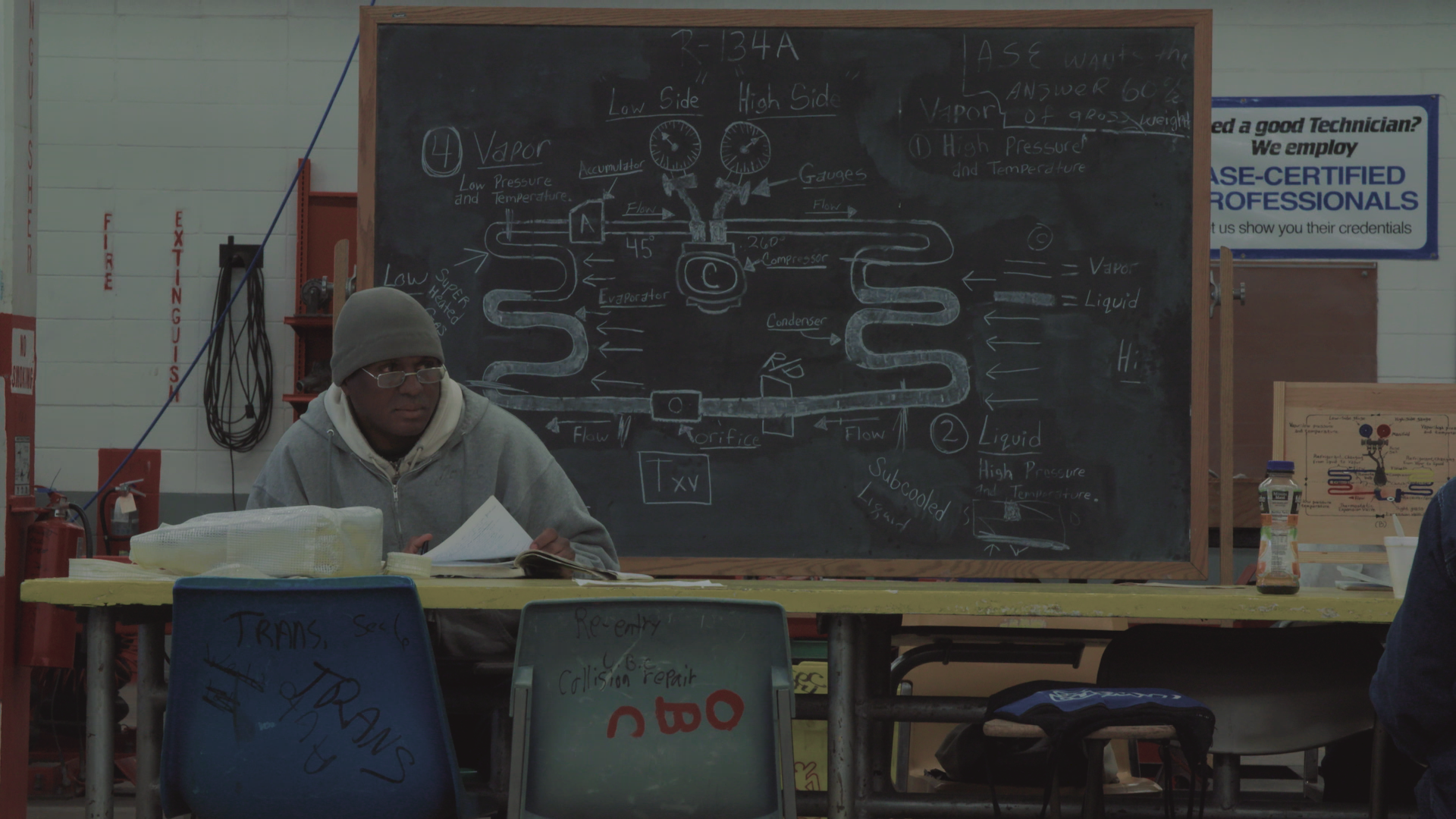New Video Examines Groundbreaking Prison Re-Entry Program in Louisiana
by Jenna Moll, Deputy Director
U.S. Justice Action Network, October 5, 2016 —
From the first glance, it’s different. The buildings where reentry court participants learn and work don’t look anything like a typical state correctional facility. Sitting on the grounds of the 18,000 acre-Louisiana State Penitentiary at Angola, a maximum-security prison, the reentry court facilities look more like a technical college or vocational school. The reentry court staff does not act like traditional prison guards and participants don’t conduct themselves like typical prisoners.
Earlier this year, I was invited to tour the portion of the reentry court program housed at the prison in Angola. And to be honest, I was skeptical at first. The reentry court system, in part, involves mixing populations, lifers with “short-timers,” which flies in the face of what research has indicated is most effective in reducing the risk of rehabilitation. After seeing it for myself, it’s clear my skepticism was unfounded.
MUST WATCH: The U.S. Justice Action Network and the Coalition for Public Safety have released a new video examining the groundbreaking Re-Entry Court program at the Louisiana State Penitentiary, also known as Angola, the largest maximum-security prison in the United States
In 2010, two judges presiding over courtrooms in southern Louisiana were fed up. Each year, approximately 15,000 people are released from Louisiana prisons and jails. Within five years, nearly half will return to prison, either for a violation of their terms of release or for committing a new crime. This cycle of incarceration was starkly apparent in their courtrooms. So Judge Arthur Hunter and Judge Laurie White decided to try something different. They started working with community stakeholders, prosecutors, probation officers, and prison officials to design a whole new approach to reentry and recidivism. And they did it without a dime of extra state money.
This new approach they designed combines moral mentoring under the guidance of lifers, trained for years by the New Orleans Baptist Theological Seminary, with intensive substance abuse treatment and vocational education. It combines this in-prison programming with a period of intensive community supervision upon release. It combines extraordinary effort within prison walls with extraordinary dedication in Louisiana’s communities. It combines hard work and hope for a better future.
Judge Hunter and Judge White orchestrated this concerted effort between the staff and correctional officers at the prison in Angola, employers, businesses, prosecutors, and nonprofits to take offenders from prison to successful reentry.
Key to the program’s success is the mentors who are serving life sentences. These individuals have gone through deep moral rehabilitation and years of training. For them, this role feels like a way to contribute to society from within prison gates. Not only do mentors serve as role models for the younger offenders, but the program also allows them to effect some positive change while serving out their life sentences.

In addition to this moral mentorship, reentry court participants are trained in a variety of skilled professions. The buildings housing the program are filled with tools and training equipment: hydraulic lifts for automotive repair training, heavy machinery for welding and cement finishing, ovens and kitchens for culinary training. All the tools and machinery are donated by businesses across the state, so mentees are appropriately equipped for working in their communities upon release. In fact, reentry court participants can obtain the highest level of certifications in their chosen vocation while serving their sentences, certifications many average employees don’t even have.
Entry qualifications are strict. To qualify for this program, judges in participating parishes hand-select offenders convicted of nonviolent, nonsexual offenses, which ordinarily carry penalties of imprisonment for no more than 10 years. Potential participants are evaluated for their willingness to choose a new path, their risk of rehabilitation, their criminogenic needs, and even their support at home or in their communities for successful reentry.
They then spend at least two years in the program at the Louisiana State Penitentiary undergoing rehabilitation programming and vocational training and certifications. They become eligible for release only upon completion of that programming and after obtaining a job offer from one of the participating partner business organizations. Requiring a job offer was a smart move by the reentry court founders. Studies have indicated there is no better way to keep the formerly incarcerated out of prison than with job.
These businesses (along with potential new partner businesses) are regularly invited to tour the facility and see for themselves how rigorous this training is. Those who have hired former reentry court participants are overwhelmingly enthusiastic and eager for a wider pool of participants. Partnering businesses are able to coordinate with the reentry court to fill current and future skills gaps to guide training, creating a deeper expansion of Louisiana’s future workforce. Businesses can also interview job candidates inside the Penitentiary assess their preparedness and qualifications for the position that they’re applying for.
Upon release, reentry court participants are subject to five years of intensive probation and a supervision plan, substance abuse and drug testing, and weekly appointments through the reentry courts. This support network drives home the rehabilitation and lessons learned while at Angola, and helps participants navigate the challenges they face upon leaving prison.
So: ex-offenders acquire a professional skill and find stable employment, business owners find qualified candidates, and the state is able to successfully rehabilitate another person, dramatically reducing recidivism. That’s hope for the participants, hope for Louisiana’s economy, hope for the system, and hope even for Louisiana’s taxpayers.
Early outcomes suggest this hope is paying off. It’s too early to have a full evaluation, but in one court alone, Judge William Knight’s court in St. Tammany Parish, 33 men have completed the programming. Only one has recidivated.
To give you context, successful alternatives to one-size-fits-all sentencing schemes are often proud of reducing recidivism rates as compared to prison by one-fifth or one-third. The reentry court outcomes thus far have produced recidivism rates a tiny fraction of the 50% failure rate produced by the rest of the justice system in Louisiana.
As many other states do nothing more than give a person a bus ticket and a couple of bucks as they leave prison, and expect him or her to seamlessly transition back into society, a few courageous leaders in Louisiana tried to do something better. Something different. They had hope for better outcomes. Their hope is already paying off for Louisiana.
__________

Judge Jules D. Edwards, III
Related: Service, prayer & justice – An interview with Judge Jules D. Edwards, III By Christian Lewis, Covenant Spotlight, September 1, 2016
__________
The Coalition for Public Safety seeks to educate lawmakers and the public about programs just like these. The U.S. Justice Action Network is working on legislative solutions to expand effective alternatives to reduce recidivism and strengthen quality reentry programming across the country. After learning about just one of the programs looking to make these goals a reality, we hope you’ll join our efforts.
More from the U.S. Justice Action Network on Medium.











